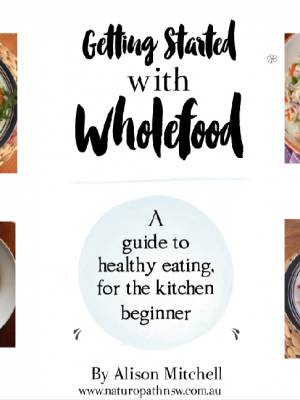How to manage reflux in babies
Gastro-oesophageal reflux in Babies
It can be extremely upsetting for parents to realise their babies are experiencing reflux, and they are often left feeling helpless. Sometimes it can be difficult to get assistance or advice, but luckily there are plenty of options.
Gastro-oesophageal reflux (or simply ‘reflux’) is when contents from the stomach — including stomach acid — are spontaneously passed into the oesophagus, causing a lot of discomfort. You can tell if your baby is suffering from reflux through symptoms such as regurgitation, possetting and projectile vomiting, but a child can experience reflux without any of these symptoms presenting as well.
It can be helpful to remember that as the infants digestive system is not adequately developed until they start eating solids (not that this should be rushed into) almost all babies will experience some form of reflux. It is not always a problem, as often the pH of the contents of a babies stomach is not acidic enough to cause damage, but it can be frustrating when an entire feed is lost and baby is then hungry again.
Most babies will grow out of reflux by the 3rd or 4th month however in some cases it doesn’t just go away; instead, it ends up causing far worse complications. This is more common when issues such as pyloric stenosis is present.
Common treatment for reflux in babies include the prescription of medications which reduce stomach acid production. While this can provide symptomatic relief it should not be used long term as it can result in deficiencies of magnesium, iron, vitamin B12, can affect kidney function and cause imbalances in the important microbiome. Coming off these medications cannot be done quickly, as the stomach acid can rebound and worsen symptoms.
Unfortunately there is limited research on the use of these medications, but as many parents and doctors feel the pressure to do something to help, they are very commonly prescribed. In some instances the baby grows out of reflux not long after the use of these medications is started, and parents associate the improvements with the medication and are then afraid to stop it.
I have compiled some information on factors that can be considered to support reflux, but it is advisable to consult with a health professional to obtain individualised advice.

Diet
Occasionally breastfed babies become colicky because of something in their mother’s diet. Some mums find that if they stop drinking cow’s milk and other dairy products, the situation improves. If you’re breastfeeding, try cutting out dairy products for a few days to see if that makes a difference. If your baby’s colic improves, you have your culprit. If not, don’t give up hope — and at least you won’t need to deprive yourself of butter.
Some breastfed babies seem to be bothered if mum indulges in a lot of spicy food, wheat products, or cruciferous vegetables. Again, to test if these foods are making your baby uncomfortable, avoid eating cabbage, broccoli, cauliflower, garlic, caffeine, alcohol, and other irritants for a few days. If your baby seems better, reintroduce the foods into your diet, one at a time, allowing a few days between reintroductions. It should be fairly easy to pinpoint which one is causing your baby problems: if he starts fussing again after a food is reintroduced, then you’ll know that’s the offending substance. You’ll have to abstain from it until your baby outgrows his sensitivity, which usually at around 3 months, but that’s a small price to pay for a happy child.
I don’t recommend eliminating too many foods at once, as this can be a stressful period at the best of times. In addition it can make it more challenging to identify foods which are the culprits when too much is eliminated at once.
Irritating Foods in Order of commonness
- Dairy (Dairy alternatives – Rice milk, oat milk, almond milk, quinoa milk)
- Chilli and spicy foods
- Wheat
- Caffiene e.g. tea and coffee
- Sulphur containing vegies e.g. broccoli, brussel sprouts, garlic
- Alcohol
- Food additives and preservatives
- Soy
- Mint
Digestive Health
Giving baby some probiotics can help (mix the powder in with a little breast milk or water and the herb slippery elm and squirt a little into his mouth, or ideally supplement via the mother) as this restores the microflora balance, improving their immunity and digestive health. It’s important to give baby the good bacteria if they were caesarean born, or are not breastfed. Lactose Dairy protein intolerance is one of the biggest causes of colic/reflux, and probiotics can help their little tummies handle this a bit more.
Edit: Through personal and clinical experience I have found that lactose intolerance is over diagnosed in babies. It is actually normal for babies to have some lactose pass through their stools undigested, and the presence in stools is often used to diagnose lactose intolerance. Lactose is the key carbohydrate in breast milk, it is actually extremely rare for an infant to be truly lactose intolerant. What this may be getting confused with is lactose overload, where mothers have an oversupply of milk and are providing too much foremilk rather than the fattier hindmilk. This issue can be corrected with breastfeeding technique adjustment, but it will also improve with time. Some cases may be due to a reaction to the casein protein, which can improve if mother reduces her intake of dairy. If it is lactose intolerance it does not matter how much dairy mother has, as the breasts will regulate their own lactose production.
Always remember if they’ve have to take antibiotics to take probiotics otherwise they can get thrush.
Slippery elm is fantastic for soothing pain as well. Mix a little of the powder with some water or breast milk and syringe it into their mouths. Start with a pinch and see how that goes.
If possible, my preference is for the mother to supplement with the probiotic LGG which passes through the breastmilk.
Natural Remedies
- Probiotics (use a strain specific to infants) or mother take the LGG strain of probiotic
- Slippery Elm powder
- Herbal tincture of herbs such Meadowsweet, Fennel, Chamomile, Parsley root and Marshmallow
- Weak, luke-warm tea of fennel seeds (crushed) and chamomile (remember to strain well and test temperature)
Breastfeeding Issues
The incidence of reflux is similar in both formula-fed and breastfed infants, but reflux episodes in breastfed infants are less frequent and shorter than those in formula-fed infants. Breastfed infants have more quiet sleep (when reflux rarely occurs). Breastmilk is also significantly less damaging than formula if aspirated (inhaled). Breastmilk is more nutritious and easily digested. It is much quicker, easier and cheaper to give an extra breastfeed than to prepare extra bottles of formula, especially when many babies with reflux are erratic feeders. Regurgitated breastmilk doesn’t smell as bad as regurgitated formula.
Positioning
Babies with reflux are often helped if fed in a more upright position than is usual – you may need to experiment with different positions. Some mothers have found that having the baby sitting facing the breast while straddled across mum’s leg or cuddled against the side of the sofa, facing the breast can be helpful. Others have found that instead of cradling their baby around their body, they can cradle the baby down the body. To do this, some mothers feed twin-style, while others feed standing up. After a feed, keep baby upright and still – many mums find putting baby on their shoulder keeps him happier.
How frequently to feed
Some babies do better with smaller, more frequent feeds. (This causes less pressure on the oesophageal sphincter.) They may not want both breasts at each feed, or may do better if offered only one side, but more frequently. Other babies have coped with being fed from one breast only, and if requiring a top-up within the hour, being given the same breast, encouraged to have a sleep, then being fed from the other breast. It is recommended that the breast is drained at each feed to ensure your baby gets both the more watery (fore)milk and the more creamy (hind)milk, and to reduce the risk of blocked ducts. Continuous or very frequent feeding is generally not recommended.
As reflux episodes are greatest within the hour or so after feeds, some babies may prefer a larger feed less often. These babies may prefer to feed from both breasts at each feed, and have a longer interval between feeds. You may like to experiment to see if any of these methods helps your baby.
Breastfeeding information obtained from: http://www.breastfeeding.asn.au/bfinfo/reflux.html
Diaper Changing Technique
Before a baby has learnt to crawl they can be prone to subluxation of their lower vertebrae, brought on by certain methods of diaper changing. When this occurs the nerve that flows to the digestive system can be affected, sometimes worsening reflux and colic. A visit to a osteopath or chiropractor skilled in helping babies can correct this, but you can prevent it from happening by using a different diaper changing technique. When changing the diaper support their chest with one hand and roll the baby side to side to clean and change the diaper, rather than lifting their bottom up by the ankles. It may take longer to do this however this can help to reduce colic and reflux by promoting good nerve flow to the digestive system.
Infant Massage
Massage therapy has been used for centuries to help with pain, injury and illness, and infant massage in particular has been found to benefit not only physical health, but also the emotional and psychological health of babies.
With regular massage, infants experience improved function of the respiratory and digestive systems, reduced levels of stress hormones, enhanced cognitive ability, reduced crying and better, more regular sleep. Not only that, but infant massage has also been found to help with infant reflux as well
Reflux is a direct result of the incomplete development of the muscle between the stomach and the oesophagus, and, unlike regular muscles, it can’t be helped directly with massage therapy. Instead, it is the skin stimulation from the massage that affects the nervous system, which in turn helps the muscle develop in two major ways:
Massage on any part of the body stimulates the vagus nerve, which is a nerve in the brain that controls various regions of the respiratory and digestive systems. This includes the oesophagus and the stomach.
Massage helps the nerves in the body to develop more quickly, which means they can begin to operate more effectively sooner. Since nerves control the muscle between the stomach and oesophagus, massage should help to improve its ability to function.
Infant massage instructors are trained to teach a sequence specific for the relief of colic. Luckily, it has been found that infant massage techniques that are focused on the abdomen can help to relieve the symptoms of colic, wind and constipation in two to four weeks with regular sessions.
Infant Massage information obtained from: http://blog.babymassage.net.au/infant-massage-reflux/
Is it really reflux?
Given that babies will naturally gave some regurgitation and spit ups for the first few months, and that a distressed baby will make similar actions (pulling knees to chest, grimacing, crying) it is possible to attribute the cause of an unhappy baby to reflux. However it may be that this particular baby is wanting something else, such as more contact. Carrying baby in a supportive carrier could help to ease their discomfort whilst still allowing the parent to go about their business.
Resources
Australian Breastfeeding Association
1800 686 2 686 / 1800 mum 2 mum
http://www.breastfeeding.asn.au/
La Leche
Facebook: https://www.facebook.com/LLLSydney
Email: sydneylll@outlook.com
Website: http://www.llli.org
Tresillian
1800 637 357
http://www.tresillian.net/
Reflux Infants Support Association (RISA) Inc.
PO Box 1598, Fortitude Valley Qld 4006.
Phone: 07 3229 1090.
Website: www.reflux.org.au
Email: info@reflux.org.au
















